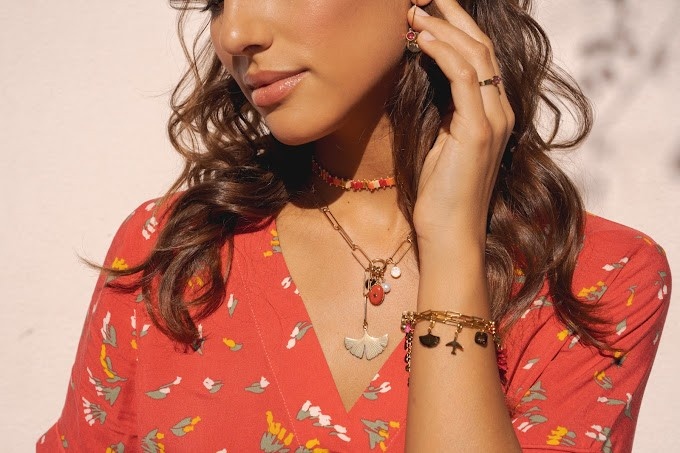
The fundamentals of fashion design course apply to all clothing, from high-end couture to mainstream styles. During this three-week course, you will learn about these ideas and hone your fashion design abilities, putting you in a position to succeed in the fashion industry. Consider fashion in perspective, including its global cultural influence and history.
Designers can recognize trends and identify influences by having a contextual understanding of fashion. In this course, you will study the global influence of cultural movements and ideas on the fashion industry and its history. With this understanding, you can contextualize top fashion designing colleges in Jaipur within a larger cultural framework and find a wealth of inspiration for your designs.
Fashion Design: What Is It?
The art of designing clothes and accessories is known as fashion design. Fashion design is a multidisciplinary academic field that draws from history, business, illustration, and technology, among other disciplines. Fashion design is deeply entwined with culture as an artistic endeavor. Fashion designers produce clothing in response to customer demand or their creative vision, and as a result, new trends are born.
How to Take a Course in Fashion Design
Your passion, abilities, and portfolio are typically more valuable in the fashion industry than your educational background. However, majoring in fashion design is a fantastic way to become an expert designer and network. This is the way to get going.
Study the fashion industry. The first thing you should do if you want to study fashion design is finish your homework. Learn about the history of fashion and familiarise yourself with the current trends and issues facing the sector. Self-directed learning can also be a great source of inspiration. It will give you a head start on your education that will help you when you apply to schools.
Learn the fundamentals for yourself. Another important way to prepare for an education in fashion design is to learn the fundamentals of drawing, sewing, and pattern-making. If you can teach yourself these foundational skills at home (or through an inexpensive program in your community), you can quickly advance to more advanced techniques in fashion school. Most schools require students to have some basic knowledge of color theory, the composition and characteristics of various fabric types, and their ability to draw and sew.
Construct a portfolio. Before applying to fashion school, it would help if you compiled a portfolio of your work, including sketches of your designs and even pictures of your clothing line. The majority of undergraduate programs in fashion design require a portfolio as part of the application process. Having a clear vision is crucial because you must submit your portfolio and a research proposal when applying to graduate programs.
Discover Textile Design, From Color Selection To Eco-Friendly Materials
- The choice of colour and fabric can drastically change a design’s feel and seasonal appropriateness.
- You will study color theory fundamentals and determine how various colour schemes relate. You will also explore the wide range of textiles available and discover how fashion sustainability can influence fabric choices.
- By the end of this course, you will have a solid understanding of fashion design. You can sketch fashion icons and select materials and colours that complement your designs.
- What are you going to accomplish?
- Explain the various facets of fashion.
- Examine the theoretical discussions and contextual viewpoints that critically influence fashion design.
- Determine the visual language of fashion design that presents the fashion figure and provides a range of aesthetic perspectives.
- Describe the function of manual and digital formats in transmitting ideas.
- Examine how colour affects fashion design and how closely fashion is related to material culture using tactile methods.
- Build a portfolio of your professional practice work within the framework of the global fashion industry.
- Essential actions for a prosperous fashion design career
- A bachelor’s degree in fashion design or a similar field will assist you in gaining the requisite abilities. Still, you will need more than a guarantee to succeed in the cutthroat fashion industry.
- Connecting with and meeting like-minded individuals
Identifying Your Specialty, Gaining Knowledge About Running And Expanding A Business
It is best to start networking with people in the fashion industry as soon as you graduate from fashion design school. Look for paid or unpaid internships. Hiring based on a recommendation is far simpler than persuading people that you are qualified.
Remember that you are not able to accomplish everything. Determine whether you are more interested in the business side of fashion, designing clothes for men, women, or children, and sportswear and accessories. Aside from working for designers, the following are some of the most sought-after positions for graduates in fashion:
- Retailer
- Manager of Branding and Fashion Advisor
- Stylist for Photo Shoots
- Journalist for Fashion
Fashion is a business even though it is also an art form. For most well-known fashion designers, learning business skills was essential to their success. A Master’s degree in Business and Management is something you should think about if you want to progress your career. You’ll learn how to market your brand and make it stand out, as well as how to manage a profitable company.
Conclusion
Working adults and students can up skill while continuing to study or work full-time with online fashion design courses. Some of the reasons you should consider enrolling in these courses are as follows. You can review the video lectures quickly and take your time with online fashion design programs.
Students can benefit from online fashion design diploma programs, which are significantly less expensive and do not require living expenses, as opposed to fashion design programs overseas, which can be very expensive.
Pupils interested in online fashion design courses have access to various platforms and renowned educators. Online fashion design course instructors frequently have more experience than their on-campus counterparts do.